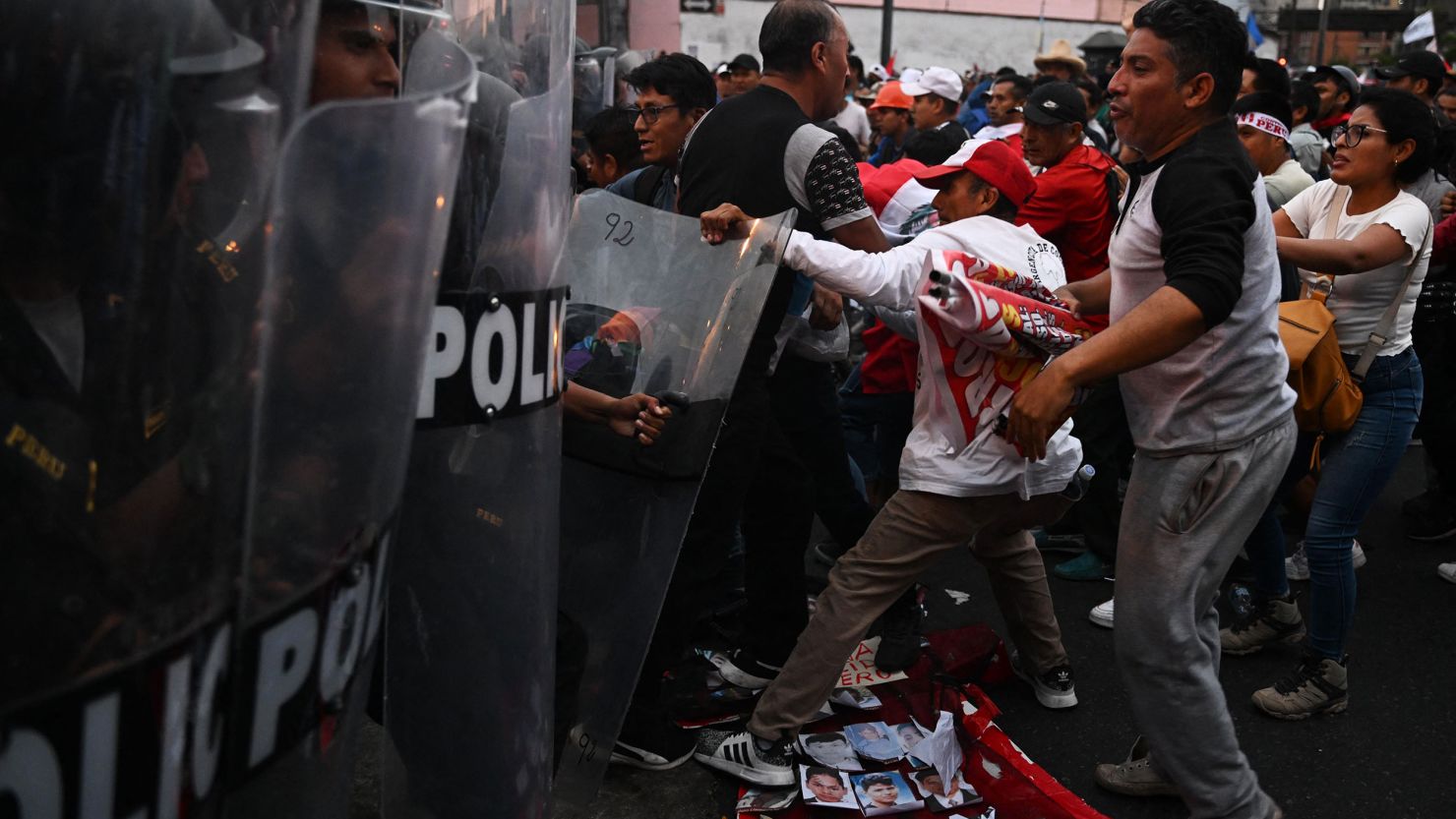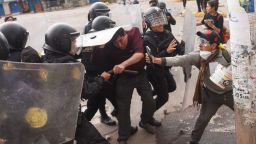Peru is seeing some of its worst violence in decades, which erupted last month following the ousting of former President Pedro Castillo, as protesters who oppose the current government call for political change in the country.
In December, a state of emergency was imposed, airports and highways became the site of some clashes, and hundreds of foreign tourists were stranded in the country amid the chaos.
To date, dozens of people have died in clashes with security forces, and human rights groups allege that authorities used excessive force against protests, including firearms. The army says protesters have used improvised explosives and weapons, Reuters reports.
Over the weekend, the government of Peru extended its 30-day state of emergency in the capital Lima, and the regions of Cusco, Puno and the constitutional province of Callao. The state of emergency suspends several constitutional rights such as freedom of movement and assembly.
The position of Peru’s new President, Dina Boluarte, is now looking as embattled as her predecessor. In January, Peru’s top prosecutor’s office launched an inquiry into Boluarte’s handling of the unrest, and several of her ministers have resigned.
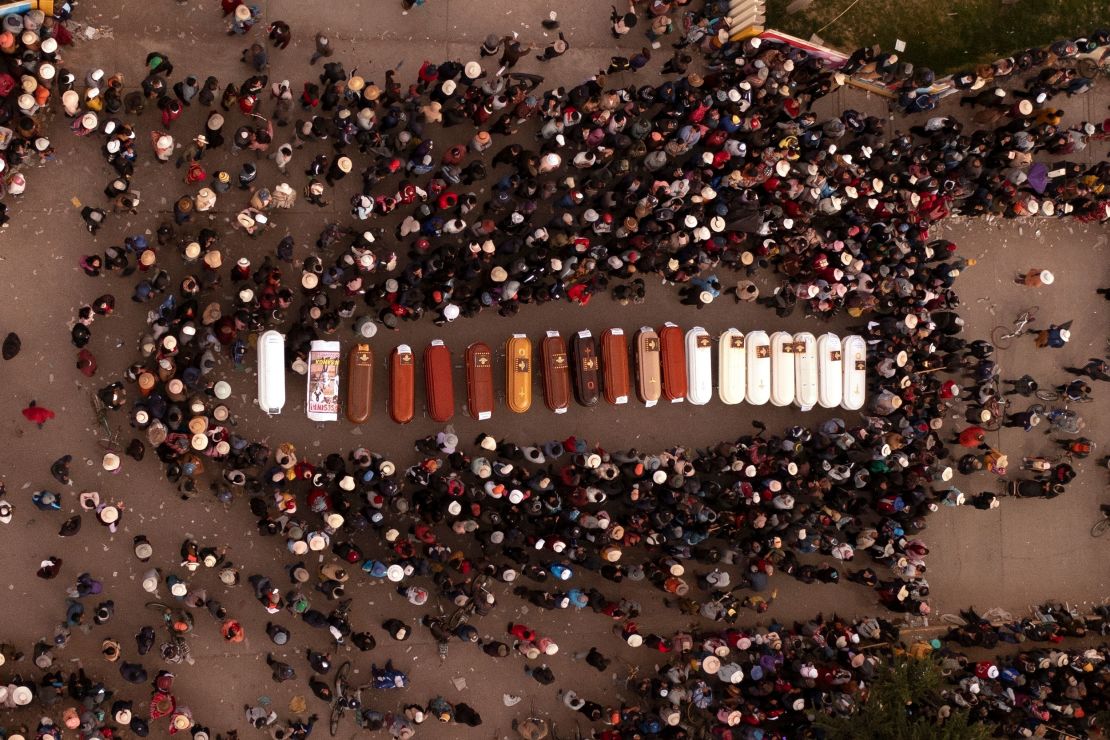
Why are protestors so angry?
Castillo’s ousting has accelerated long-simmering political tensions in the country.
Protesters have been demanding new elections, the resignation of Boluarte, a change to the constitution and the release of Castillo, who is currently in pre-trial detention.
Castillo, a former teacher and union leader who had never held elected office before becoming president, was himself from rural Peru and positioned himself as a man of the people. Many of his supporters hail from poorer regions, hoping Castillo would bring better prospects to the country’s rural and indigenous people.
While protests have occurred throughout the nation, the worst violence has been in the rural and indigenous south, which has long been at odds with the country’s coastal White and mestizo, which is a person of mixed descent, elites.
Peru’s legislative body is also viewed with skepticism by the public. The president and members of congress are not allowed to have consecutive terms, according to Peruvian law, and critics have noted their lack of political experience.
What sparked Peru’s recent unrest?
Peruvian politics has been mired in dysfunction for years with Boluarte being its sixth president since 2018.
It was plunged into political turmoil again in December when Castillo attempted to dissolve Congress and install an emergency government.
Castillo, whose brief time in office had been dogged by several corruption investigations, was impeached and removed from office. He is currently accused of crimes of rebellion and conspiracy, which he has denied.
His supporters took to the streets in the days after his removal, demanding his release in what some have described as a “national insurgency.”
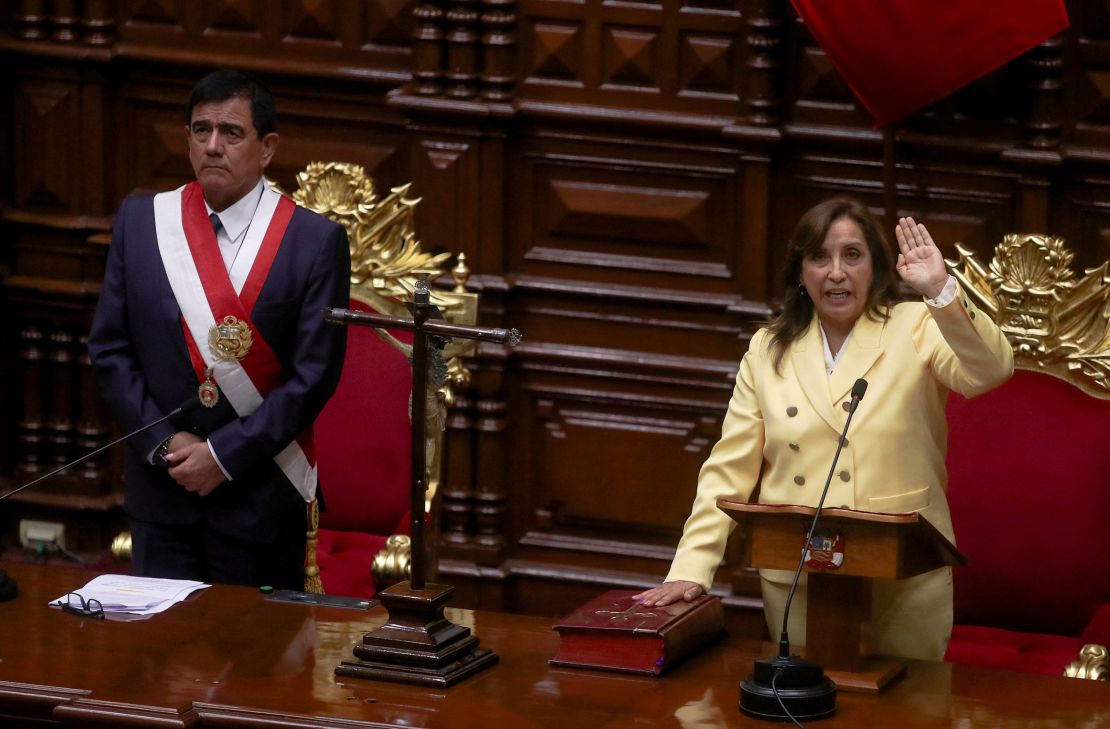
Casualties resulting from protestors’ clashes with police have further inflamed fear and anger on both sides.
After a lull over the holidays, demonstrations resumed in early January. At least 17 people died in anti-government protests in the southern city of Juliaca, in the Puno region – where the majority of the Aymara indigenous population live.
Autopsies on the 17 dead civilians found wounds caused by firearm projectiles, Juliaca’s head of legal medicine told CNN en Español.
Days later a police officer was burned to death by “unknown subjects” while patrolling the area, police said.
How has the current government responded to the protests?
Boluarte has struggled to appease the protesters. In mid-December, her then-Defense Minister Otárola declared a state of emergency, deploying troops to the street.
The ensuing violence has seen hundreds injured, and the country’s ombudsman said at least 49 people have died since the protests began.
In January, Peru’s prosecutor launched an investigation into Boluarte, Otárola, and other key ministers for the alleged crime of “genocide, qualified homicide, and serious injuries” in relation to the bloodshed. Boluarte has said she will cooperate with the probe.
The attorney general’s office also said it would investigate former Prime Minister Pedro Angulo and former Interior Minister Cesar Cervantes, both of whom served under Boluarte for just a few weeks, for their involvement in handling the protests.
Several top ministers have resigned since protests began. The country’s former Minister of Labor Eduardo García Birmisa resigned on Thursday, calling on Peru’s president to apologize and hold general elections, according to a letter posted on his Twitter account. Former Minister of Interior, Victor Rojas Herrera, and Minister of Women and Vulnerable Populations, Grecia Rojas Ortiz, resigned the following day.
Despite mounting political pressure, Boluarte has said she has no intentions of leaving office.
In a televised speech Friday on state-run TV Peru, Boluarte told the nation, “I am not going to resign, my commitment is with Peru, not with that tiny group that is making the country bleed.”
How have others reacted?
The bloodshed in Peru has drawn global attention. The European Union on January 10 issued a statement condemning the violence and calling for dialogue in the country; the following day, an observation mission from the Inter-American Commission on Human Rights was sent to Peru.
“We remain deeply concerned about ongoing violence in Peru & saddened by the injuries & deaths. All Peruvians deserve to live in peace & enjoy their hard-earned democracy. We support peace on all sides & the govt’s stated commitments to address the challenges gripping the country,” tweeted Brian A. Nichols, US Assistant Secretary for Western Hemisphere Affairs, on Friday.
The Organization of American States will convene to “analyze the situation in Peru” on January 18.
Who is Pedro Castillo?
Castillo rose from obscurity to be elected in July 2021 by a narrow margin in a runoff, and was seen as part of a “pink tide” of new left-wing leaders in Latin America.
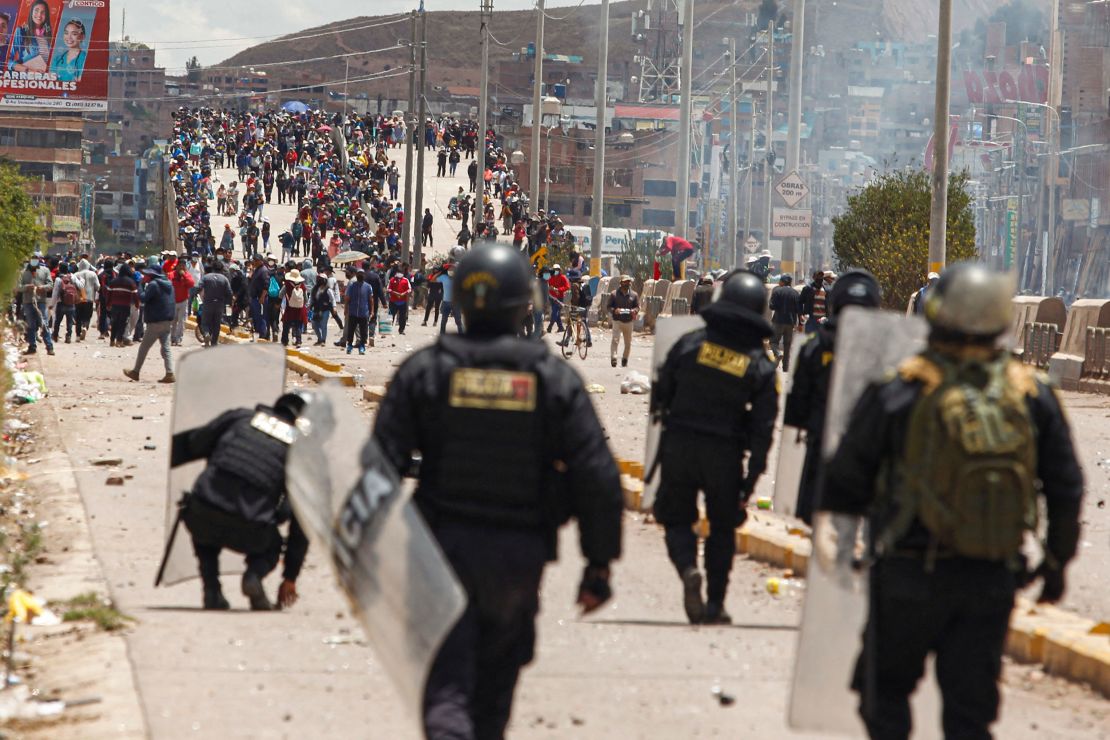
Despite his platform promising to rewrite the constitution and increase wealth redistribution, in his brief presidency Castillo struggled to deliver those pledges amid rising inflation in Peru, his lack of political experience and strong conservative opposition in Congress.
His government became mired in chaos, with dozens of ministers appointed, replaced, fired or quitting their posts in little over a year. Castillo himself faced multiple corruption investigations and two failed impeachment attempts before he was ousted.
Castillo has repeatedly denied the claims against him and reiterated his willingness to cooperate with any corruption investigation. He argued the allegations are a result of a witch-hunt against him and his family from groups that failed to accept his election victory.
His detention has raised the ire of several leftist Latin American leaders, who denounced his impeachment and claimed Castillo had been a victim of “undemocratic harassment” since his election in 2021.
After his family was granted asylum in Mexico, Peru ordered Mexico’s ambassador to leave the country within 72 hours. Peru’s foreign ministry said the decision was made after Mexican President Andres Manuel Lopez Obrador made comments about Peru, calling it an “unacceptable interference in internal affairs, in clear violation to the principle of non-intervention.”

